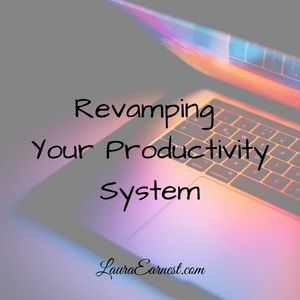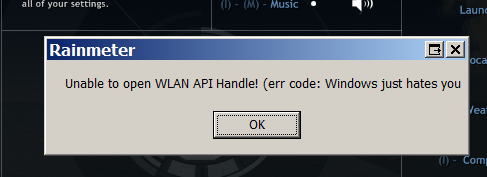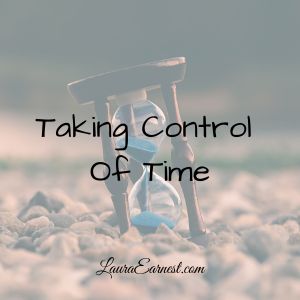Revamping your productivity system can be a daunting task. Digital? Paper? Hybrid? And what tools should be used for each part?
Sometimes the revamp is caused by an outside force, as is the case with one of the readers who emailed me recently. She is being required to use Google, but is used to Outlook and was having issues accessing Gmail through Outlook. Then add in the calendar and tasks, and things were getting confused.
Today we will look at how to revamp a productivity system by looking at systems of record.
A Path of Productivity
I have been through multiple versions of my productivity systems. I went from pure paper (Daytimer) to digital printed to paper (Daytimer software) to digital (Outlook and then Google) to now multiple systems that run the gamut.
While many productivity experts recommend having a single system, I have found for a multitude of reasons that I work better if I keep work separate from personal separate from the blog.
At work I run Outlook, as dictated by my employer. At home I run Google, dictated by preference. And the blog is run on paper.
But there is overlap: my work schedule and blog events are shown on my Google calendar. There is also non-system separation: none of my tasks for work, personal or blog, exist in Outlook, Google or paper.
So what is the delineation?
Systems of Record
In my job, I specialize in data. I pull lots of information from various sources together so that they can be seen in one place.
But for each thread of data there is one source. This is called the system of record. What this means is that all data comes from its primary source, and there is one system where we keep like data.
If this were to be applied to a manufacturing setting, it would mean that the inventory of widgets in the warehouse would be tracked in an inventory system. If it were banking, the amount of money on deposit would be in the banking system. If this were education, it would be the gradebook.
The main goal with a system of record is to keep everything together. Imagine the chaos if a teacher kept grades in a manual gradebook for some daily assignments and in an online one for the rest! The teacher needs to know that there is one place that is the source of truth for the student’s grade: one gradebook.
The Productivity System Components
Productivity systems are made up of separate components, all of which interact, but can stand on their own.
- Calendar. This is for holding date/time dependent events.
- Task list. A way to track tasks that need to be done, either today or in the future and possibly repeating.
- Notes. Text information about projects, events, and tasks.
- Email. A form of communication. This should be used as an input, rather than an end point for tasks or notes.
- Contact information. I’m going to include a system to keep track of people as a component here as well, because without one you have to work in a vacuum.
All of these items tie together. Email can bring tasks as well as calendar events, and calendar events can generate tasks, notes and emails.
Each one of the components will have a system of record, and they all need to work together.
Deciding on Your Systems of Record
In order to make a system where you are not duplicating effort and not losing information between the components, you need to decide on what your systems of record are for all the components of your productivity system.
You will need to know how its going to be used, and how it will interact with the other components in order to make the best choice for you.
Sometimes the choice of the item will be out of your control. For those of us whose employers dictate either Outlook or Google for email, that will be chosen for you. You just have to pick the rest of the system to work well with it.
Picking How You Use It
What you decide to use for your system will be influenced by how you will use it.
In the gradebook example above, the two obvious options are a paper gradebook or the school’s gradebook. While either would be fine, using a paper gradebook will mean that everything will have to be double-entered: first in the paper, then in the electronic. Choosing the electronic gradebook as the system of record eliminates the dual entry.
For a calendar, much depends on how it will be used. I need access to calendars from multiple systems and people, so an electronic version will be my system of record. My mother, on the other hand, only needs to track a few appointments and events a month, and a paper calendar at home serves her needs best.
Decide how you need to use the system as part of deciding which tool will be your system of record.
Aim for Minimal
Ideally your system will have one tool for each of the areas of productivity: one calendar, one email program, one task list, one notes storage and one address book. (Bear in mind this is within the individual systems).
If you have 15 email addresses to stay on top of, pick an email program that will allow you to work with all 15 in one place. If you have 8 calendars to manage, pick a calendar application that allows you to see all 8 in one place.
By aiming for a minimal system, you will minimize the risk of missed or dropped information.
Deciding on Interaction
All components in your system should have a pathway to accept input from your other components. As far as you can make this automated, you will save yourself a lot of time.
If you have a task list, make sure you can quickly get tasks generated from email into it. If you have an address book, make sure that the steps to keep it updated are as few as possible.
Specific Systems: Google Vs Outlook
Some people ask me which system I prefer: Google or Outlook?
I use both. My employer and my current client both use Outlook. But I use Google for my personal system, with Outlook as a backup.
Why I Use Google for Personal and Blog Emails
Why? Well, the short answer is Windows Hates Me. I have received an error message confirming it. (Yes, this is a screen shot of a real error message I received)
All joking aside, I find that Outlook is Flaky. I’ve had it decide to not send emails, dump my rules, not schedule people that are on meetings and more. I have to double- and sometimes triple-check everything I do in Outlook to make sure it has done what I ask.
Google, on the other hand, has never given me issues. It consolidates multiple email addresses with no blips, syncs calendars seamlessly, and manages my contacts with almost no effort on my part.
Why I Use Outlook as Backup
I use Outlook to backup my Google mail. There is single reason for this: If Google were to have an outage, I would not be able to get to my information because it is all stored in their cloud.
A cloud, in computing terms, is simply someone else’s computer.
That means I have no control over it. Google could decide to shut down its mail program tomorrow and everything would poof! be gone.
Outlook saves to my hard drive. That means it is on my computer.
So even though Outlook and I have an adversarial relationship, I use it to pull copies of my information off of the Google servers into a place that I can always get to.
This is not being overly paranoid. I have had two clients and the city for which I taught cut off my access to email…and to the information I needed to defend myself and/or my company against legal threats from those organizations. Having local copies of that email meant I could access it and give information to the lawyers as needed.
What’s Your System of Record?
As you think about switching up your systems, think about what your systems of record are going to be. At that point you will be able to establish your tools and start thinking about their interactions. Next week will be a complete overview of all my systems and how they interact.
If you would like a head start on how to clean up your email, my Taming the Gmail Dragon ebook is available.








